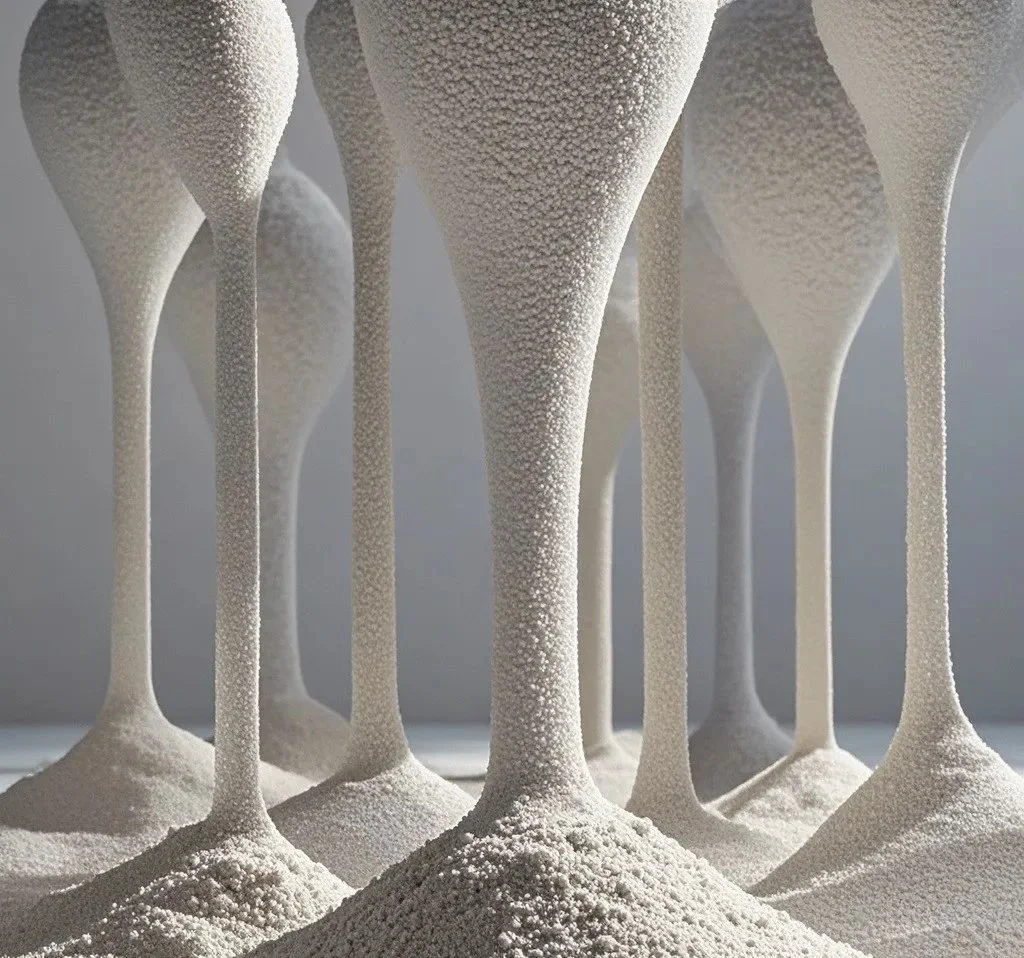Powder flows because of an imbalance of forces on its particles. Forces on particles include gravity, adhesion, friction, and electrostatic force. The greatest influences on powder flow are gravity and adhesion. Many factors affect powder fluidity. Particle size distribution and shape are key. They greatly influence fluidity. Also, factors like temperature, water content, and humidity affect powder fluidity. So do electrostatic voltage, porosity, bulk density, and the bonding index. It is vital to analyze the factors that affect powder fluidity. This is to measure it using scientific methods.

Powder Application
Powder engineering is the knowledge and methods from using powder processing tech and related natural science theories in a specific powder processing production department. Powder technology is the idea and skills to solve technical problems. Powder engineering is a systematic method to solve production problems. It uses powder technology at its core, along with related technologies. As a materials major, you must master this engineering powder processing tech.
Powder engineering is a term for powder application technologies. They are used in industrial production. They are based on the properties and behaviors of particles and powders. It applies systematic knowledge and methods. We study powders’ properties. We then control their behavior and apply various unit operations in powder processing.
Powder engineering covers many unit operations. They include crushing, pulverization, classification, storage, filling, and transportation. It also includes granulation, mixing, filtration, sedimentation, concentration, dust collection, drying, dissolution, crystallization, dispersion, forming, and sintering.
Powder engineering is widely used in many industries. These include building materials, machinery, energy, plastics, rubber, mining, metallurgy, medicine, food, feed, pesticides, fertilizers, papermaking, and environmental protection. It is also used in information, aviation, aerospace, and transportation.
Five factors affecting powder fluidity
Particle size:
The powder’s surface area is inversely proportional to its particle size. The smaller the powder particle size, the larger the specific surface area. As the powder particle size decreases, several things happen. First, the molecular and electrostatic attraction between the powders increases. This reduces the particles’ fluidity. Second, smaller particles are more likely to adsorb and agglomerate. This increases cohesion, raising the angle of repose and reducing fluidity. Third, smaller particles pack more densely. This reduces air permeability, increases the compression rate, and lowers fluidity.
Morphology:
The particle size matters. So does the particle shape. Both affect fluidity. Powders of equal particle size and different shapes have different fluidities. Spherical particles have the smallest contact area and the best fluidity. The needle-like particles have many planar contact points. Shear forces between the irregular particles reduce fluidity.
Temperature:
Heat treatment can increase the powder’s bulk and tap densities. This is because the powder particle density increases after the temperature rises. However, at high temperatures, the powder’s fluidity decreases. This is due to increased adhesion between powder particles and the container’s wall. If the temperature exceeds the powder’s melting point, it will become liquid. This will make the adhesion stronger.
Moisture content:
When the powder is dry, the fluidity is generally good. If it is too dry, the particles will attract each other due to static electricity. This will worsen the fluidity. With a small amount of water, it is adsorbed on the particles’ surface. This forms surface-adsorbed water, which has little effect on the powder’s fluidity. As the water content increases, a film forms around the adsorbed water of the particles. This increases resistance to their movement and reduces the powder’s fluidity. As water content exceeds the maximum bound water, fluidity drops. More water means a lower fluidity index. This worsens powder fluidity.
Interaction between powder particles:
The friction and cohesion between powder particles greatly affect their fluidity. Different particle sizes and shapes affect powder fluidity. They change the cohesion and friction of the powders. With a large powder size, fluidity depends on the powder shape. The volume force is much greater than the cohesion between the particles. The fluidity of powder particles with rough surfaces or uneven shapes could be better. With very small powder particles, fluidity depends on particle cohesion. The volume force is much smaller than this cohesion.
Powder moisture content detection method:
1. Oven method
The oven method is also called oven drying method or pyrolysis weight loss method. Dry the sample in an oven at 105±2℃ at normal pressure until it reaches a constant weight. The weight lost is water. That is, the moisture content at 105℃ is found by weighing the sample before and after drying it. There are two drying methods: normal pressure and reduced pressure. Their principles are the same.
Formula: (weight before drying – weight after drying) ÷ weight before drying × 100 = moisture (%)
Calculation formula: (W1-W2) / (W1-W0) × 100 = moisture (%)
Where: W1 = weight of the sample and weighing dish before drying at 105℃ (g);
W2 = weight of the sample and weighing dish after drying at 105℃ (g);
W0 = weight of the weighing dish that has reached constant weight (g)
2. Rapid moisture meter determination method:
Put the sample on the tray and click start. The test result will be ready in 3-5 minutes, with no need for calculations.
